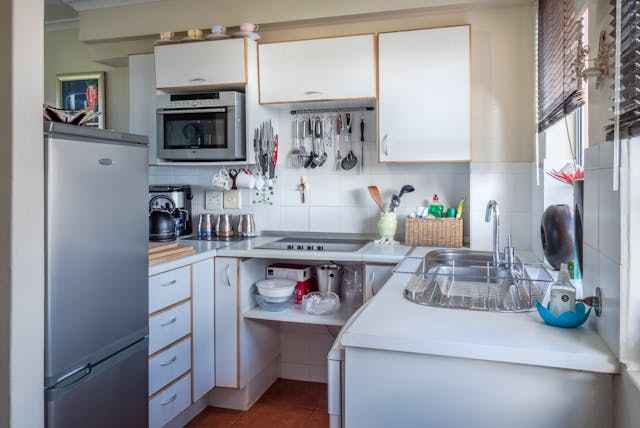Yes, it is possible to replace a kitchen sink without replacing the countertop.
The kitchen is the heart of any home, and over time, certain components may need a refresh. One common area that often requires attention is the kitchen sink.
But what if you want to update the sink without the hassle and expense of replacing the entire countertop?
In this article, we’ll explore the feasibility of replacing a kitchen sink without touching the countertop.
Steps to Follow to Replace A Kitchen Sink
Assessing the Current Sink
Before diving into a sink replacement project, take a close look at your existing setup. Check for any signs of wear, damage, or outdated design.
Understanding the current state of your sink helps in making informed decisions about the replacement.
Choosing a Compatible Sink
With a plethora of sink options available, finding one that fits both your style preferences and the countertop dimensions is crucial.
Consider factors such as material, size, and configuration when selecting a sink that complements your kitchen.
Gathering Necessary Tools and Materials
Embarking on a sink replacement journey requires preparation. Create a checklist of tools and materials to ensure a smooth installation process.
Having everything ready beforehand minimizes disruptions during the project.
Disconnecting the Old Sink
Removing the old sink is a step-by-step process that involves disconnecting plumbing and ensuring a safe removal.
Carefully follow the instructions, and don’t forget to turn off the water supply before starting the disassembly.
Preparing the Countertop
Before installing the new sink, it’s essential to prepare the countertop adequately.
Address any damages, clean the surface, and ensure it’s ready to accommodate the new sink.
Installing the New Sink
Placing the new sink into position requires precision.
Follow the manufacturer’s guidelines for installation, securing the sink tightly to prevent any wobbling or instability.
Reconnecting Plumbing
Connecting the new sink to the plumbing is a critical step. Ensure all pipes are properly aligned and securely attached to prevent leaks.
Double-check your work to avoid potential water damage.
Sealing and Finishing Touches
Using an appropriate sealant is vital to achieving a watertight seal between the sink and countertop.
Once sealed, make final adjustments and clean up any excess sealant for a polished finish.

Common Challenges and Solutions
Anticipate and address potential challenges during the replacement process, such as stubborn plumbing connections or unexpected countertop issues.
Troubleshooting tips can help navigate these hurdles.
Benefits of Replacing Only the Sink
Opting to replace only the sink offers a cost-effective way to upgrade your kitchen. Enjoy a refreshed look without the need for an extensive and pricey countertop replacement.
Maintaining the New Sink and Countertop
Proper care and maintenance are key to ensuring the longevity of your new sink and countertop. Follow cleaning guidelines and implement preventive measures to avoid future issues.
Customizing the Look
Enhance the aesthetics of your kitchen by adding accessories or features to the sink area. Personalize the space to reflect your style and preferences.
Professional vs. DIY Approach
Consider whether to hire a professional for the replacement or take the DIY route. Weigh the advantages and disadvantages of each approach, and follow a step-by-step guide if opting for a DIY project.
Conclusion
In conclusion, replacing a kitchen sink without replacing the countertop is a feasible and cost-effective way to give your kitchen a facelift.
By following the outlined steps and considering your specific needs, you can achieve a refreshed look without the need for extensive renovations.







